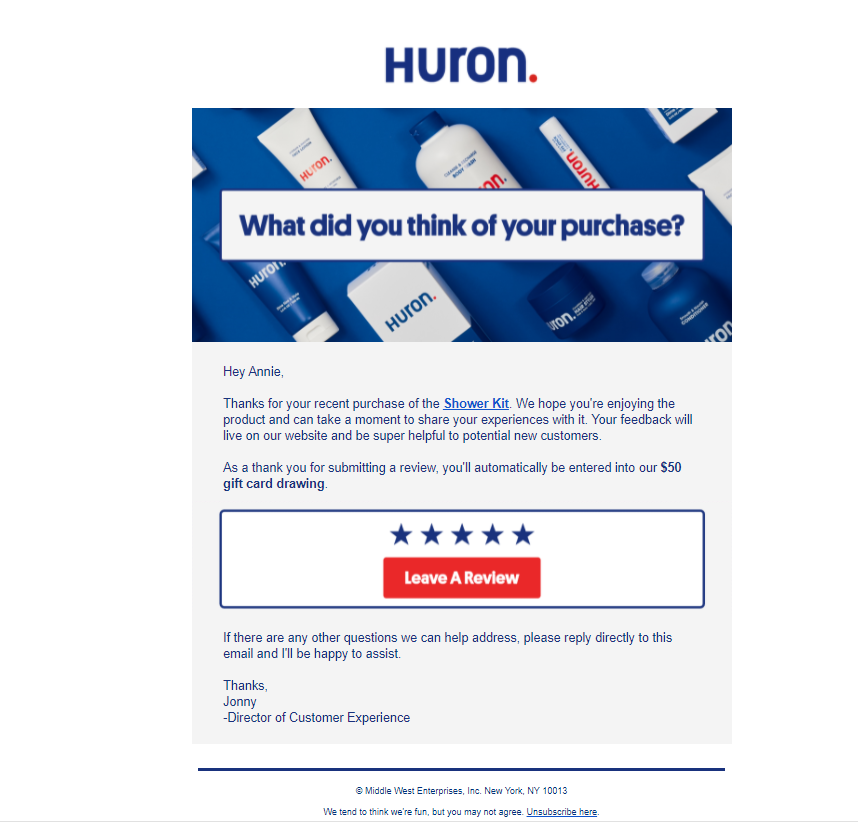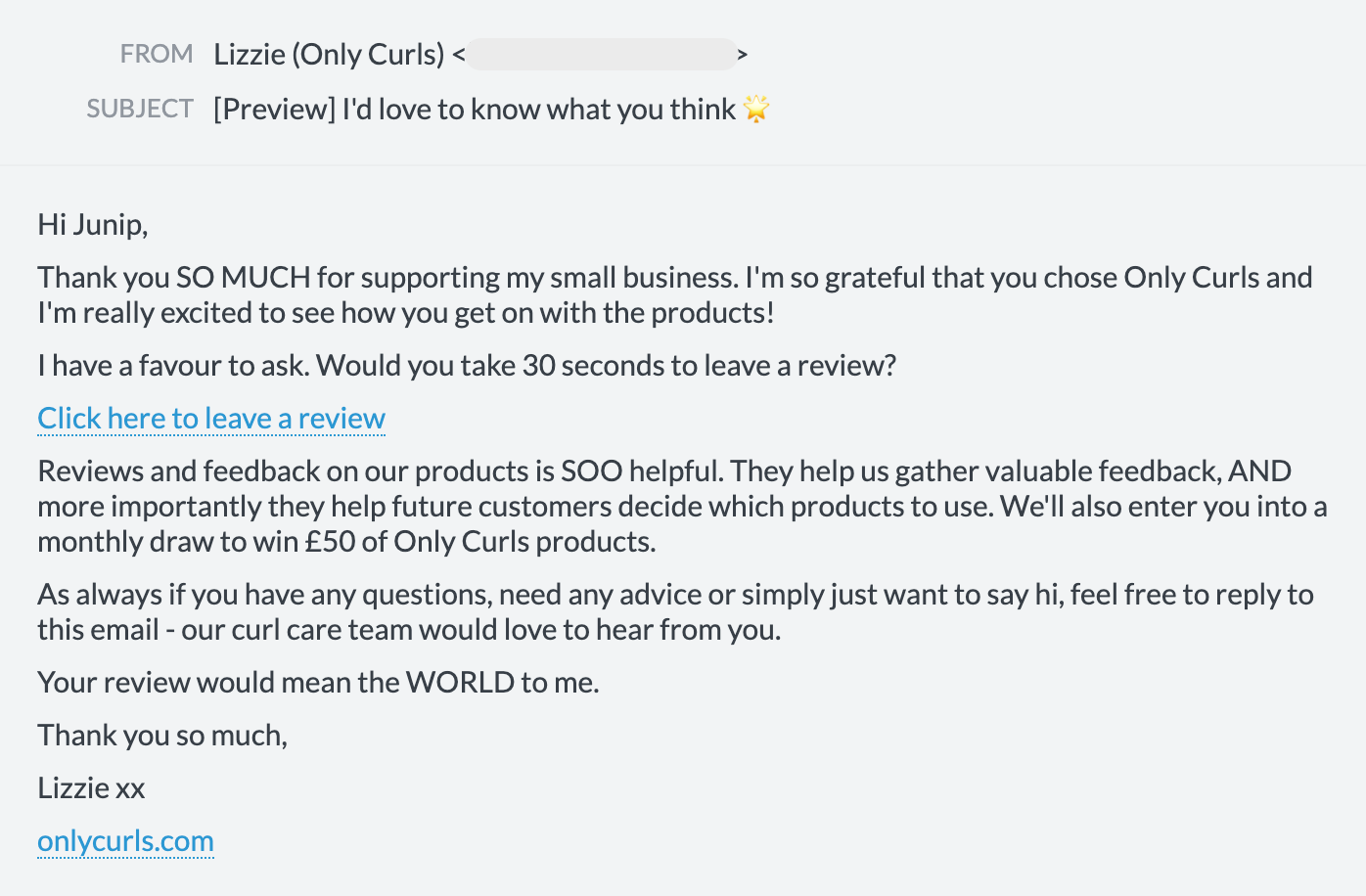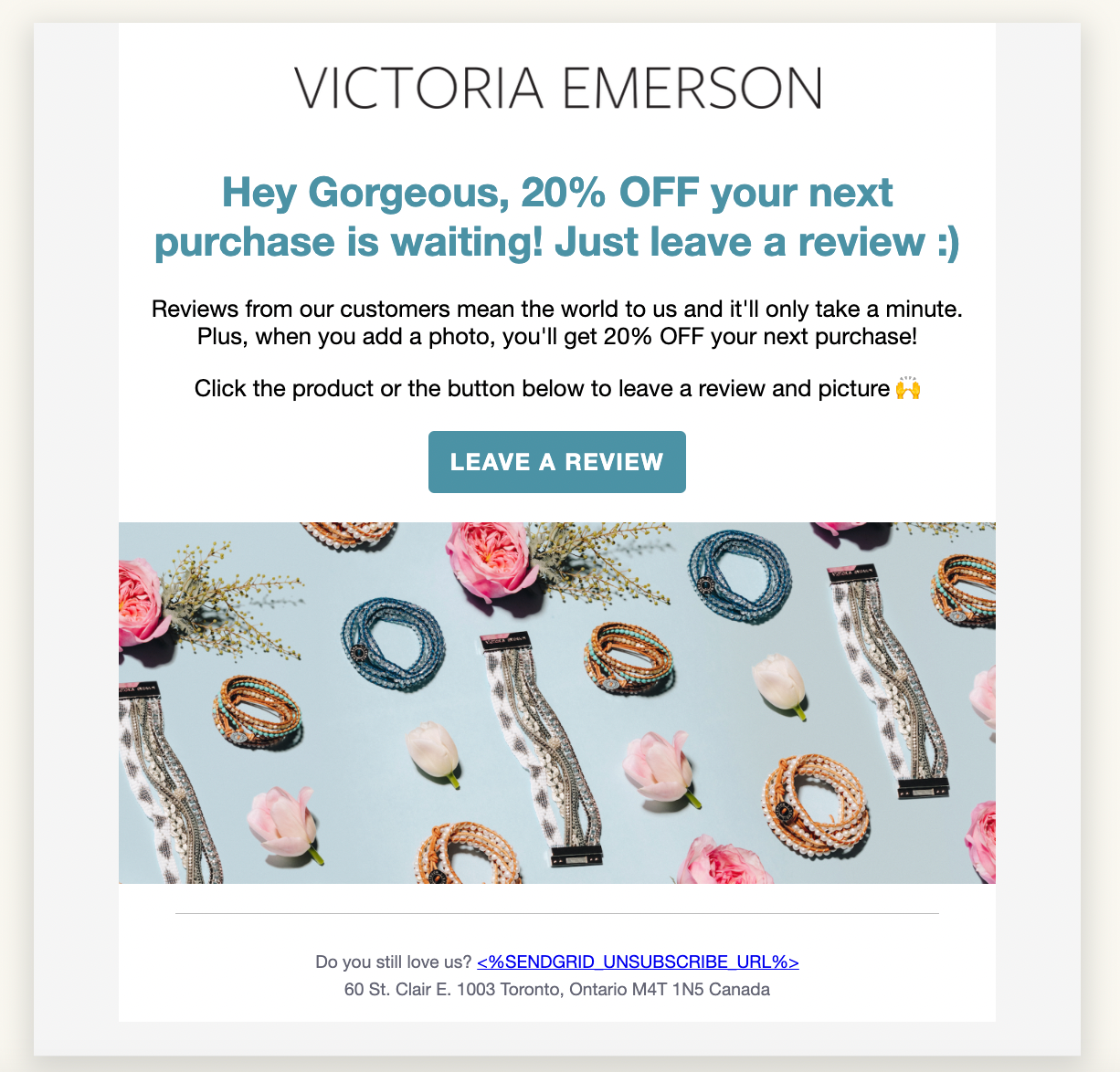 All blog posts
All blog posts
11 Examples of Emails Brands Use To Get More Reviews
Want to know the secret to getting customers to leave a review? We've got you covered.
It all starts with the review request email - it's the powerhouse of collecting reviews. Understanding what makes one effective is the secret to getting customers to leave reviews. We asked 11 brands that have an outstanding submission rate with Junip what their strategy is. They gave us some tips & examples to make sure you can send great review requests too.
1. Let customers know why their feedback is important
As a rule of thumb, you should be sincere in all of your customer interactions and make them feel like a valued customer...because they are! Letting customers know how important their feedback is goes a long way to making them feel appreciated. The more personable and sincere the email, the better. The founder of Ponyback Inc., Stacey Keller, stands by this approach and shares her thoughts on why treating customers like friends is so important at Ponyback:
“I want my customers (aka. my friends), to feel like my friend. So at every customer email and interaction, I sign my emails from Stace. I try very hard to ensure they are treated like a friend and not just a customer.
I think people are much more willing to give a review when they know the impact it can have. I also let them know why it is soo valuable to have their feedback” - Stacey Keller, founder of Ponyback Inc.
Tip: publicly responding to reviews to thank customers for the feedback, also goes a long way in making a customer feel appreciated!
2. Send at the right time
Timing. Is. Everything. You want to send a review request to customers after you know they received their package and had time to enjoy it. So how long should you wait before sending a review request?
At Junip, we recommend a 7-10 day delay after an order is shipped. You should also consider other variables that impact shipping times like international orders, product returns, how soon customers use your product, how long it takes to see results, etc. TRUE Linkswear, an athletic shoe brand, waits 14 days after a customer receives their shoes so they have enough time to test them out.
On the other hand Huron, a men's personal care company, segments their email flows and adjusts the time delay based on the product purchased. Some products take longer to see results, so this strategy gives customers enough time to maximize benefits before being asked for a review.
Tip: Use an order tracking app to know when a customer's order has been delivered. This will let you trigger a review request with perfect timing.
3. Switch up the sender
Using a customer’s first name in the subject line or in the header of the email is a special touch, but it can be kicked up a notch. If you want to go that extra mile, send the email so it looks like it’s coming from someone on your team, or even better - the CEO.
4. Offer a reward
Rewarding customers who leave their first review is a simple way to increase your review submissions and drive repeat customers. So, how much of a discount should you offer to get a customer to bite?
We see brands of all sizes offering a standard $5-$10 coupon on a customer’s next purchase as an incentive. ELAVI, a functional snack company, uses this strategy and has said it re-engages customers for a follow-on sale and builds their library of reviews visible on their site, which they love to see!
Tip: If you’re giving customers a discount, don’t keep it a secret! Make it clear in the email that customers will get a discount for leaving a review (more on this later).
11 Examples of Emails That Work
ELAVI
Subject Line: Help a small business + get 💸
How is it sent?
Junip built-in message templates
Why does it work?
- The subject line and copy tells the customer why their feedback is important
- Lighthearted copy and images create a personality for the brand
Huron
Subject Line: {customer first name}, what did you think of your purchase?

How is it sent?
Klaviyo
Why does it work?
- Consistent branding with a visually pleasing design that communicates a clear CTA to leave a review
- Offers an incentive with automatic entry in a gift card draw
- Sent and signed off by a team member
TRUE Linkswear
Subject Line: Enjoy the walk?
How is it sent?
Klaviyo
Why does it work?
- Clean design with consistent branding
- Copy expresses appreciation of customer feedback
- Unique subject line
Sunsoil
Subject Line: Tell us what you think (and get $5 off)
How is it sent?
Klaviyo
Why does it work?
- A simple example that leverages incentives and bolded text to signal review form
- Uses sincerity and clearly communicates the value of a customer’s review
Ponyback
Subject Line: I'd LOVE to hear what you think! 😍
How is it sent?
Junip built-in message templates
Why does it work?
- Sincere and genuine copy that makes customers feel valued
- Sent and signed off by CEO
MOB Beauty
Subject Line: Can’t wait for your feedback

How is it sent?
Junip built-in message templates
Why does it work?
- Clear CTA with a preview of the review form, making it easier for customers to take action
- Consistent branding
Art of Tea
Subject Line: Do you want $5 OFF your next Art of Tea order? Open this…👀
How is it sent?
Junip built-in message templates
Why does it work?
- Different text and emojis in the subject line grabs attention
- Offers incentive and clearly communicates this in the copy and subject line
Farmers Juice
Subject Line: Woof woof - will you bark back? 🐶

How is it sent?
Klaviyo
Why does it work?
- Bold design with consistent branding that communicates clear CTA
- Unique subject line that grabs attention
- Offers incentives
Only Curls
Subject Line: I'd love to know what you think 🌟

How is it sent?
Klaviyo
Why does it work?
- Text-only email, written in the brand's voice, which makes it feel more personal
- Clear CTA, no distractions
VICTORIA EMERSON
Subject Line: Leave a review and get 20% OFF!

How is it sent?
Attentive
Why does it work?
- Clear and easy-to-understand walkthrough of the steps & benefits of leaving a review
- Offers an incentive, and clearly states it in the email title
Siblings
Subject Line: 🤗 Enjoying your candles?

How is it sent?
Klaviyo
Why does it work?
- The title and body of the email encourage customers to provide genuine feedback
- Clean and on-brand design
If you’re still looking for some more inspiration or want a template to build from, we’ve got you covered!
Try out Junip’s message templates that already use the basics of these best practices and let you build on them.




